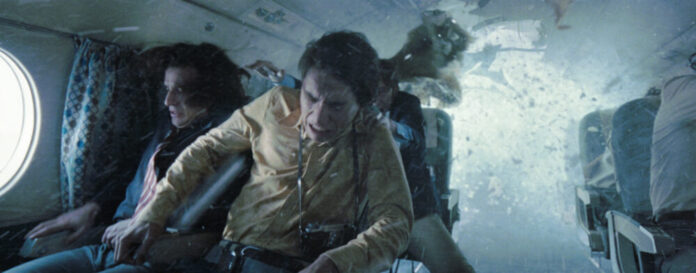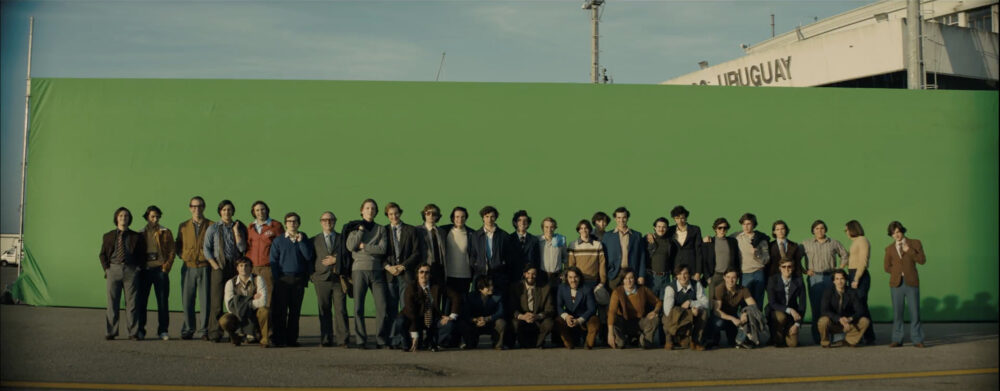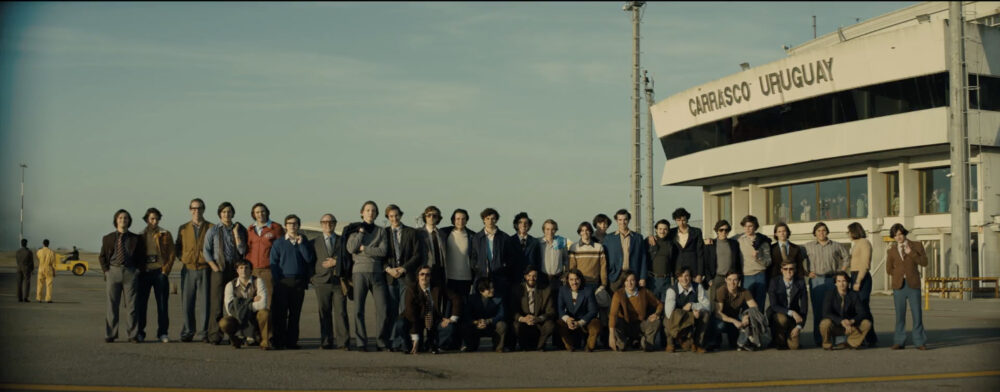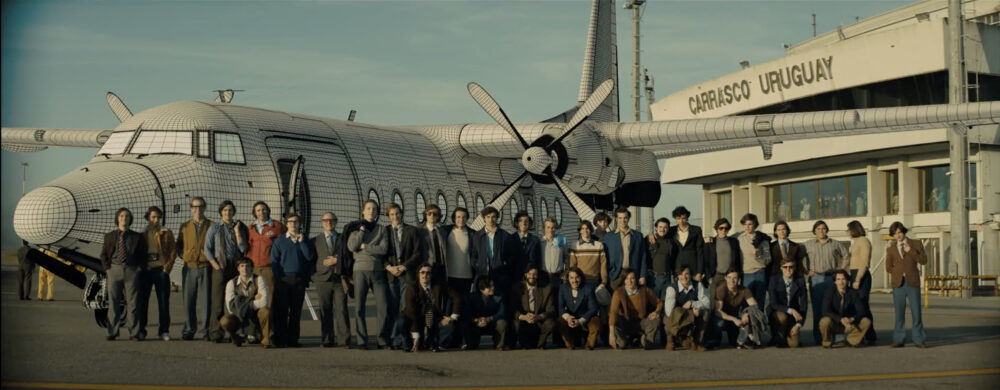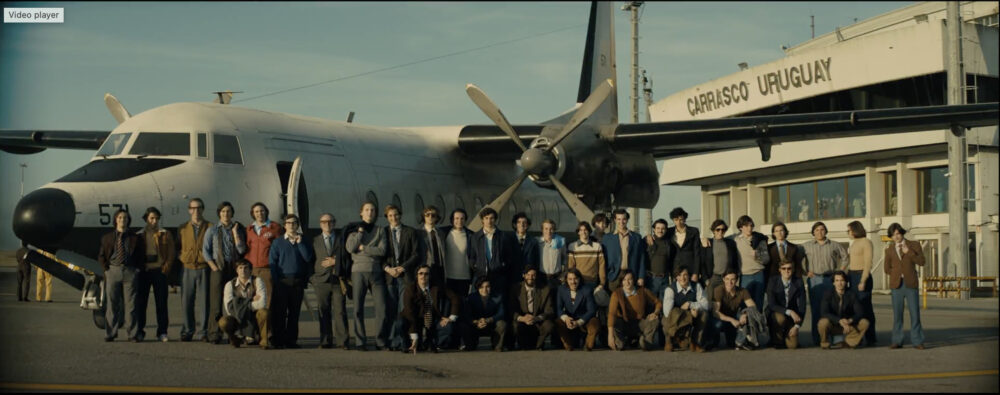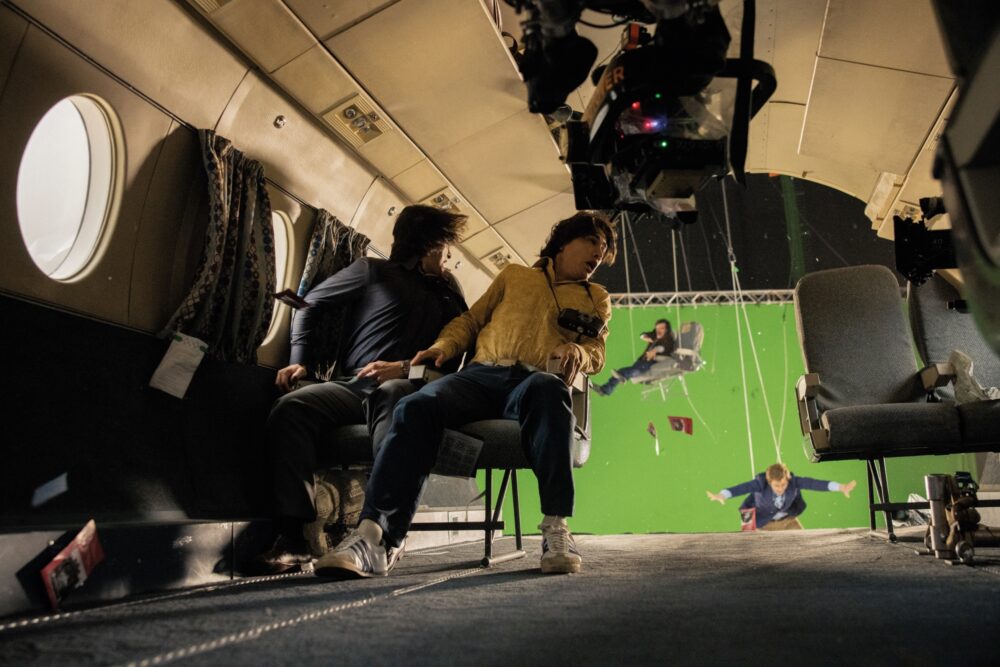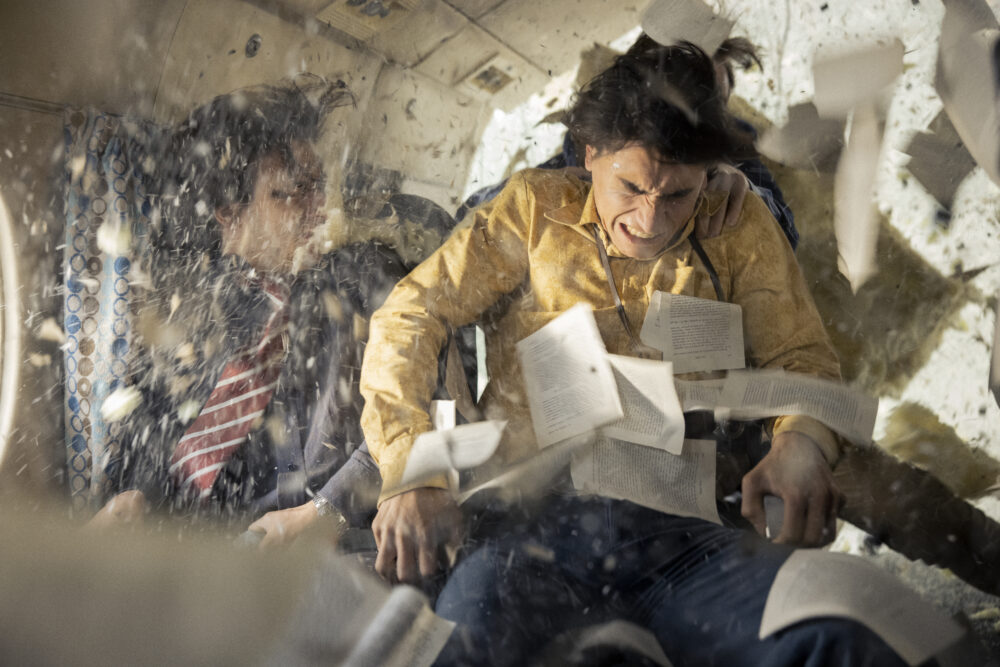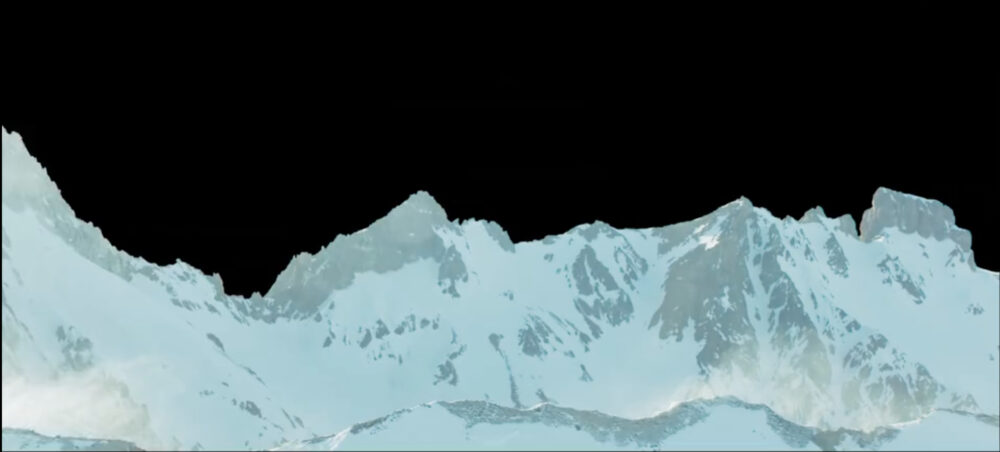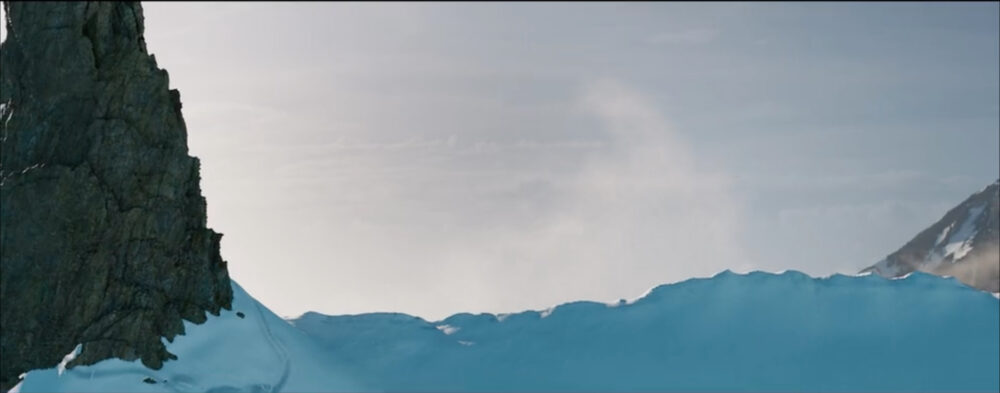|
Getting your Trinity Audio player ready...
|
[adrotate banner=”1090″]
Re-creating a modern disaster on the screen can be a tricky affair. Such was the case with director J. A. Bayona’s adaptation of Pablo Vierci’s book Society of the Snow, which documents the Andes flight disaster of 1972 in which the survivors of Uruguayan Air Force Flight 571 had to endure 72 days of wintry conditions before their rescue. The filmmaker tapped visual effects supervisors Laura Pedro and Félix Bergés to oversee the digital augmentation of 900 shots for the Netflix survival thriller, which included producing a mountain range environment and a dramatic plane crash.
“Laura was always with the main unit, and I was more with the second unit where I have a lot of experience capturing material,” explains Bergés. “The previz was designed together, and in postproduction we split the shots in half.”
According to the duo, their responsibilities were interchangeable. “We were like one person because Félix and I were thinking in the same way, so at the end it was easy for us to work together,” notes Pedro. “During the process we were mixing [our roles] the whole time.”
‘One of the most beautiful scenes was done with a macro probe lens where everything is completely deformed, but to change the background for these types of lenses was difficult.’
— VFX supervisor Félix Bergés
Mission: Maximum Realism
The creators adopted two different approaches for principal photography. “The accident was a technical shoot where we did a lot of previz, while J.A. wanted do the rest of the movie in an organic way,” states Bergés. “Laura and I put no restrictions on him.”
One of the film’s most important symbolic images is of the passengers’ families watching their loved ones fly away with the plane reflected in the top lefthand corner. “The power of your visual effects is proportionate to the idea,” observes Bergés. “It’s always good to work [with] J.A., because he has a lot of good ideas.”
The team relied on photographic elements for the backgrounds to ground the visual effects within the real world. “In that sense, Society of the Snow is 100 percent photographic,” explains Bergés. “The only fully CG shots are of the plane going through the clouds. We used a lot of details to put more scale. And that was exactly the same for the Valley of Tears.”

Traveling to the actual site of the accident was a crucial decision. “We had to be there to be able the understand the dimensions and scale of mountains,” says Pedro. “Since we went there with J.A. and the DP [Pedro Luque], it was easier to know which type of shots work better to cinematically convey a prison with enormous walls.”
The duo says that there was room for visual experimentation. “One of the most beautiful scenes was done with a macro probe lens where everything is completely deformed, but to change the background for these types of lenses was difficult,” says Bergés. “However, when it works it is amazing. The camera language of this movie is one of the best things. I saw it with my 16-year-old nephew, and he said, ‘This is like a documentary; it has something that is true.’ The main goal for all of the departments was to be real.”
Three sets were used for the plane crash. “The first one is an entire plane from the beginning of the sequence to the initial turbulence,” reveals Pedro. “This part of the sequence is 100 percent real; there are no visual effects at all. The second set was the broken fuselage where we can make the most extreme movements and turbulence. The third set is for the end of the sequence when the plane crashes and everything collapses and the bodies in the seats collide with each other.”
The production mixed various techniques to get the best results. “We had stunt performers, actors and dummies,” says Bergés. “Every shot was different [to confuse the eye] because if you have five or 10 shots in a row [of the same technique] then you’ll say, ‘One stunt performer, one dummy and three actors.’” Pedro adds, “We tried to mix stunts, special effects and visual effects to find the perfect way for each shot.”
One of the film’s most terrifying sequences depicts passengers in the backseats flying out of the open fuselage. “The beginning of the shot was two different plates,” reveals Pedro. “We shot the plate with the three guys who fall out and the second plate with the actors in front. Those were mixed together. When the crash happens, we replaced this with CG. But the beginning of the shot is real with the actual actors.”
This approach was commonplace in the production. “The beginning is actors or stunts, and the end are digital doubles,” remarks Bergés. “You see the actor, and when the movement is very fast, then we make a change to a digital double.”
Pedro points out that continuity was never an issue with editorial. “Since we planned the whole accident in previsualization, we shot exactly what J.A. wanted, so the accident is more or less the same since the first day until now in the film,” she says. “We only shot what was needed.”
The crash site scenes were captured elsewhere. “In the mountains, we knew that there were going to be a lot of days with bad weather, so we made a set of 60 meters of snow in a parking lot,” recalls Bergés. “It was small, but enough.”
LED screens were preferred over greenscreens, which would have contaminated the white snow with green spill. Pedro explains, “The material that we put on the LED screens were the original pictures from the valley, so the light was real.”

Details on Ice
Unsurprisingly, there was a lot of snow to be simulated. “We had a crew of 200 on set with the footprints accumulating over the course of shooting,” says Pedro. “The most technically challenging part was the snow surrounding the actors which had to be changed a lot of times. The footprints were tricky because you had to be precise.”
The solution was found in the plate photography. “It was easy, in a way, for us,” Pedro notes, “because we had a lot of footage of real snow in the same mountain, so we could take some parts to produce the same snow in CG.”
Cold breaths were also inserted into 200 shots. “We did a plate shoot of Laura’s breaths in the cafeteria. On the top of the mountain there is a lot of humidity and [it] is below zero. It’s a good place to make steam, and Laura is a perfect source of steam,” Bergés jokes.
El Ranchito VFX was the main vendor with additional support provided Glassworks, Lamppost VFX, Miopia FX and Twin Pines. “El Ranchito designed an asset of the backgrounds in an easy way to share with the other vendors, because in the beginning we knew that more help would be needed,” remarks Pedro. “Also, they worked with an application that we built with El Ranchito based on Unreal Engine. It showed inside the valley and the geometry of the Sierra Nevada so they could move the camera in this application and see where we were in the Valley of Tears. Because of this, they were able to work without us.”
The most complex shot was the final one of the plane crashing. “The total number of shots is 35,920!” says Bergés with a laugh. “In two years, I will be comfortable in watching the accident. The same thing happened to me when we did The Impossible and A Monster Calls. Another challenge was designing the valley in a realistic way. We made a good decision to make everything photographic. Now it seems easy, but it wasn’t that easy!”
Society of the Snow is currently streaming on Netflix. The film was nominated for a Best International Feature Academy Award this year.




